Luckily, there is a tool that can potentially help your child in all of these ways and more: a visual schedule.
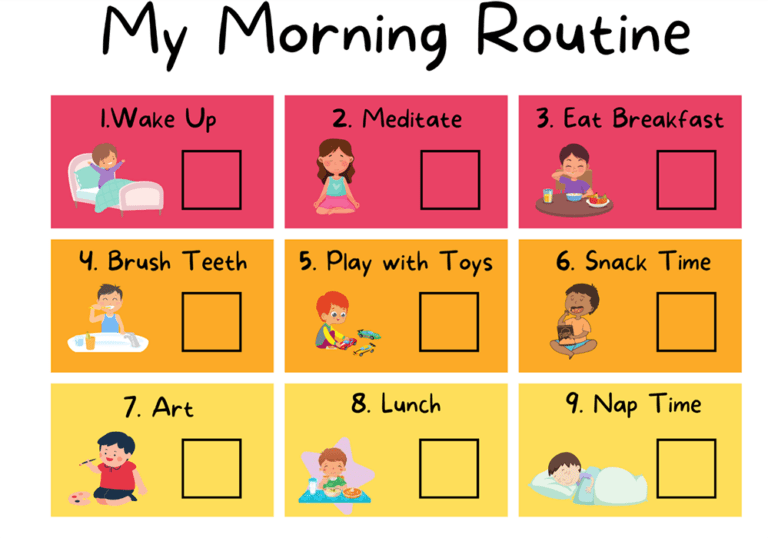
What is a Visual Schedule?
Here are some examples of activities that are great opportunities for visual schedules.
Getting Ready for Bed
- Take a bath.
- Put on pajamas.
- Read a story.
- Brush teeth.
- Get into bed and sing songs with mom and dad.
- Go to sleep.
Morning Routine
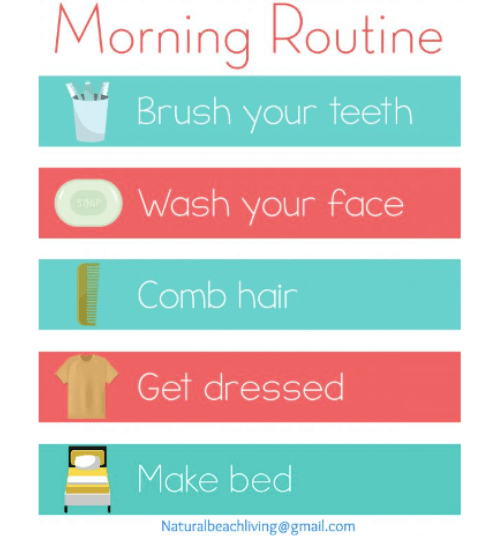
Brushing Teeth
- Get my toothbrush & toothpaste.
- Put toothpaste on my toothbrush.
- Brush teeth for 2 minutes.
- Rinse.
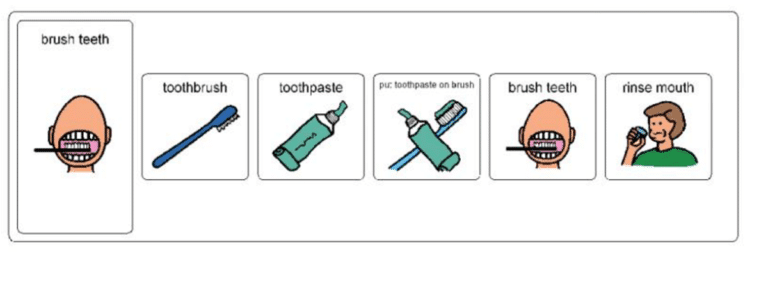
My Day
- Go to school.
- Play at the park.
- Visit grandma.
- Come home.
Where Can Visual Schedules Be Used?
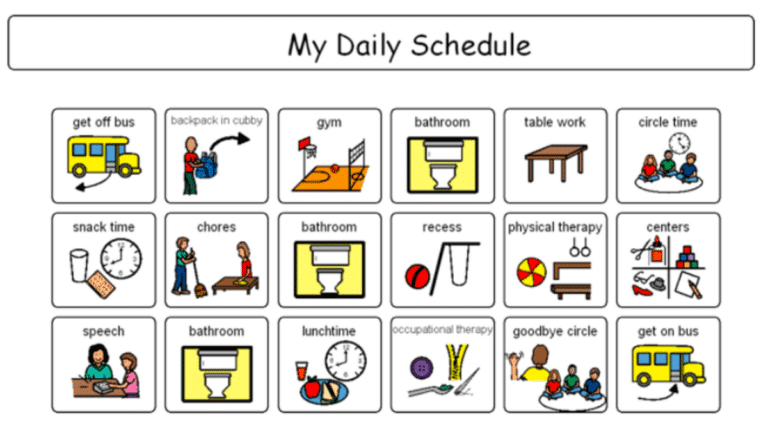
Who Can Benefit
- Expressive language delays
- Receptive language delays (difficulty understanding concepts or following verbal directions)
- Anxiety
- Sensory processing difficulties
- Difficulty transitioning between places or activities
- ADD or ADHD
Why are Visual Schedules Effective?
Visual schedules can improve a child’s behavior by providing a sense of calmness. Using them can ease anxiety associated with an unknown, changing daily schedule.
2. Enhancing Communication. Being able to look at a visual representation as instructions and concepts are spoken can support a child’s growing language skills.
One research study showed that toddlers were more likely to learn words when language stimulating activities were embedded within predictable events.
3. Improving Attention. A visual schedule can help a child attend to and focus on a certain activity. It provides predictability, which has been suggested to enhance attention. A visual schedule can even be customized by using motivating pictures or photographs.
How to Create & Use a Visual Schedules
Ready to start using visual schedules with your child? Here’s how to do it.
1. Assess your child’s needs. What’s a task, activity, or time of day that seems to be challenging for your child?
2. Choose your method of display. You can create a visual schedule digitally or on paper. You can use an app, or create a document on your computer using photographs or downloaded images. If you’re in a pinch, you can even draw a visual schedule.
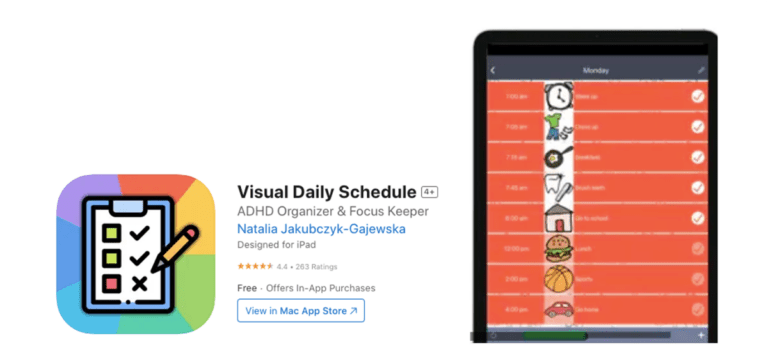
3. Give an introduction & explanation. Show the child the visual schedule before it’s being used. Explain what it’s for and how it works. Answer any questions your child might have about using the visual schedule. This can provide them with a sense of independence in completing tasks.
4. Stay consistent. Refer to the visual schedule consistently during the activity or time of day it refers to. The more a child is exposed to it, the more familiar he or she will be with what the steps represent. They’ll also better learn the meaning of the words that accompany it.
5. Monitor & modify as needed. Monitor the child’s response to using the visual schedule. Does it appear to help him or her? If the child seems to be overwhelmed or have difficulty attending to the schedule, there could be too many steps. Be prepared to modify the schedule in ways like including less steps or changing the pictures.
Additional Resources
A visual schedule is a valuable tool that can be used with any child, during any daily activity. Because of its benefits like improving communication skills and attention, visual schedules can be particularly helpful for children with sensory needs, Autism, or speech and language delays.
The speech-language pathologists at TherapyWorks are experienced in using visual schedules to improve a child’s behavior, attention, and communication skills. TherapyWorks offers speech therapy, occupational, physical therapy and ABA. If you would like to learn more, or discuss your child’s specific needs, please don’t hesitate to reach out to TherapyWorks!








